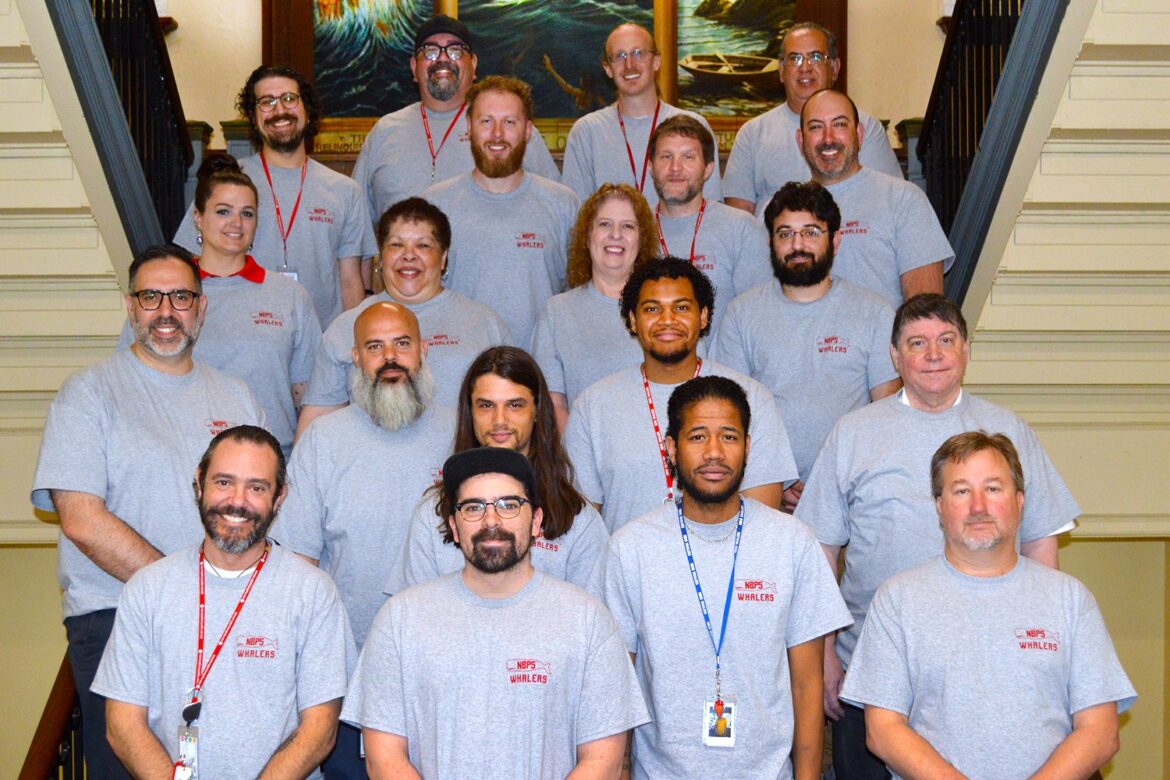Last summer, Victor DeMedeiros, Senior Technology Manager at New Bedford Public Schools in Massachusetts, set up and enrolled 3,200 new Chromebooks for the entire high school of approximately 3,000 students.
“During the swap-outs, it was clear how excited students were to get their hands on the new technology,” DeMedeiros said. “Many of them shared how much they were looking forward to using faster, more reliable devices for learning. It may seem like a simple equipment upgrade, but you could see the impact immediately—students were more engaged, more motivated, and genuinely energized by having modern tools to support their education.”
Innovation doesn’t have to mean over-the-top wizardry in the classroom to make a serious difference in the daily lives of students.
“Technology is not a magic solution, but when it’s aligned with purpose, equity, and support, it becomes a powerful catalyst for progress,” DeMedeiros says. “The work we do behind the scenes matters because it enables everything else in the school system to function better.”
DeMedeiros was recently recognized for his work with an Innovative Leader Award for Innovative Senior Technology Manager at the Tech & Learning New England Regional Leadership Summit.
DeMedeiros shares three ways technology managers can help the lives of busy educators and administrators, plus offers tips for those making edtech purchasing decisions.
Inspiring Tech-Supported Initiatives at Work
An ambitious five-part innovation initiative — including a network infrastructure overhaul, security enhancements, student device management, teacher-students classroom management, and parent-community engagement — was a blend of both long-overdue innovation and real-time necessity, says DeMedeiros.
“On one hand, the district was due for a systemic tech upgrade to meet the evolving demands of education,” he says. “The pace of change in digital learning, data systems, and infrastructure made it clear that staying status quo was no longer an option.”
In many school districts, technology departments traditionally operate in a constant state of triage, reacting to outages, fixing devices, and putting out daily fires.
“It often felt like working in an emergency room—high-pressure, reactive, and focused only on the next crisis,” DeMedeiros says. “While that kept us running in the short term, it wasn’t sustainable, and it kept us from becoming a truly strategic asset to the district.”

With the support and vision of edtech influencer and Assistant Superintendent of Technology and Learning, Dr. Matthew X. Joseph (above left, with DeMedeiros), DeMedeiros began shifting toward what he calls an “operating room” approach—in which preparation, precision, and proactive planning are the standard.
“In this model, every tool has its place, every team member understands their role, and the focus is on long-term outcomes rather than simply surviving the next issue,” he says. “This change in mindset has been the real driver behind our tech-supported transformation.”
Part of this effort included improving outreach and inclusion within the local area. Engaged parents and communities create stronger, more supportive learning ecosystems. Tech can help smooth this path of connectivity.
“If communication systems are clunky or inconsistent, families feel disconnected and uninformed—especially in emergencies, school closures, or when interventions are needed,” DeMedeiros says. “A refined system ensures transparency, improves trust, and can directly impact student attendance, behavior, and performance by bringing families more meaningfully into the fold.”
3 Ways Tech Managers Can Improve Busy Lives of Staff
DeMedeiros offers this advice for tech managers who want to better empower their team.
- Streamline Tools and Training – Too many platforms can overwhelm staff. Consolidating tools into integrated systems (such as using Google Workspace, ClassLink, or ParentSquare) helps reduce friction and makes day-to-day tasks simpler.
- Provide Responsive Support – Whether it’s fast troubleshooting or proactive professional development, timely tech support keeps educators focused on teaching, not tech glitches.
- Use Automation for Admin Tasks – Automating repetitive processes such as attendance reporting, communication alerts, or device check-ins, gives time back to staff for more impactful work.
Dollars and Sense
In an uncertain financial environment, balancing need versus want is a challenge when schools have tight budgets. Offering objective, factual analysis can help stakeholders see those funds responsibly put to work.
“Data analysis has been instrumental in helping us prioritize spending,” says DeMedeiros. “We use data to demonstrate ROI — whether in terms of improved attendance from communication platforms or reduced tech downtime due to preventative maintenance. It’s not just about cost, but value. We also take advantage of E-Rate, grants, and public-private partnerships to extend our budget as far as possible.”
Putting off enhancements in a perceived attempt to be fiscally frugal has downsides. Delaying infrastructure upgrades increases risk—both in terms of cybersecurity and operational inefficiency, warns DeMedeiros.
“Outdated systems can lead to data breaches, frequent downtime problems, or even safety issues if communication tools fail,” he says. “More than that, it sends a message to staff and students that we’re not investing in their success. Tech is foundational now, not optional.”
3 Considerations for Decision Makers when Choosing New Edtech
When it comes to making buying decisions, DeMedeiros says school leaders need to consider:
- Scalability and Compatibility – Tech must scale across schools and integrate with existing infrastructure. Avoid silos; choose platforms that play well with others.
- User Experience and Training Requirements – Even the most powerful tool is ineffective if it’s not user-friendly. Factor in the learning curve and the availability of training and vendor support.
- Long-Term Sustainability – Always evaluate total cost of ownership. Consider licensing models, maintenance, and the vendor’s roadmap for updates and support.
- Cisco
- Verkada
- Chromebooks
- GoogleWorkspace
- ClassLink
- ParentSquare


